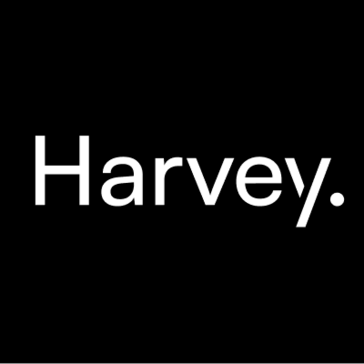Description

Harvey.

Filevine
Comprehensive Overview: Harvey. vs Filevine
Harvey and Filevine are both tools in the legal tech space, but they serve different functions and cater to different markets. Here's a comprehensive overview of each, highlighting their primary functions, target markets, market share, user base, and key differentiating factors.
Harvey
a) Primary Functions and Target Markets:
- Primary Functions: Harvey is an AI-powered legal assistant designed to automate legal workflows and provide AI-driven insights. It typically utilizes advanced machine learning algorithms to assist with legal research, document drafting, and contract review. Harvey aims to increase efficiency by reducing the time spent on routine tasks and improving the accuracy of legal work.
- Target Markets: Harvey primarily targets law firms, corporate legal departments, and legal professionals who need to streamline their operations and enhance productivity through AI solutions. It appeals particularly to organizations seeking cutting-edge technology to supplement their legal expertise.
b) Market Share and User Base:
- Harvey is a specialized tool, and its market share is relatively niche given its focus on AI-powered assistance in legal operations. The user base mainly consists of tech-forward legal teams and firms that are open to integrating AI into their processes.
c) Key Differentiating Factors:
- AI Capabilities: The key differentiation of Harvey lies in its advanced AI and machine learning capabilities, helping professionals automate tedious tasks and deliver predictive insights.
- Focus on Automation: Harvey places significant emphasis on reducing human workload in legal processes, prioritizing automation as a core component.
- Innovation and Cutting-edge Technology: With a focus on the latest in AI technology, it appeals to firms looking for modern solutions.
Filevine
a) Primary Functions and Target Markets:
- Primary Functions: Filevine offers cloud-based case management and project management solutions designed primarily for law firms. Its functions include document management, task management, time tracking, billing, and client communication. It aims to streamline case handling and manage the full lifecycle of cases efficiently.
- Target Markets: Filevine targets law firms of all sizes, from small practices to large firms, as well as in-house legal teams and other professionals requiring robust case management tools. Its user-friendly interface and comprehensive feature set make it appealing to a broad range of legal professionals.
b) Market Share and User Base:
- Filevine has a more significant presence in the legal software market due to its comprehensive suite of tools for case management. It is widely used across many law firms in North America and is growing steadily, backed by its reputation for efficiency and ease of use.
c) Key Differentiating Factors:
- Comprehensive Case Management: Unlike Harvey, Filevine’s strength is in its detailed case management features, offering end-to-end solutions to handle case workflows.
- Integration and Customizability: Filevine provides extensive integration capabilities with other software and tools, allowing firms to customize their workflows accordingly.
- User-Friendly Interface: Known for its intuitive design, Filevine simplifies the adoption for firms transitioning from traditional systems.
Comparison Summary:
- Functionality: Harvey focuses on AI-powered automation, whereas Filevine is more about comprehensive case management.
- Target Audience: Harvey targets those looking for high-tech solutions, while Filevine appeals to a wider range of law firms seeking efficient case handling.
- Market Presence: Filevine has a broader market presence and larger user base due to its extensive feature set, while Harvey is more niche, attracting tech-forward firms.
- Technology Usage: Harvey differentiates itself with advanced AI capabilities, while Filevine excels with integration and comprehensive user features for case management.
In conclusion, while both Harvey and Filevine serve the legal industry, they cater to different needs and therefore have different market dynamics and user bases. Harvey is more about automating legal processes with AI, while Filevine provides a robust suite of tools for managing all aspects of legal cases.
Contact Info

Year founded :
2019
Not Available
Not Available
Australia
http://www.linkedin.com/company/harveyau

Year founded :
2015
+1 415-310-4212
Not Available
United States
http://www.linkedin.com/company/filevine
Feature Similarity Breakdown: Harvey., Filevine
As of my latest update in October 2023, I do not have specific information on a product named "Harvey" related to legal tech or any domain that could be compared with Filevine. However, I can give a general idea of what to consider when comparing two project or case management tools like Filevine, which is well-known in the legal tech space for case management.
If you have specific information about "Harvey," you could use the following framework to perform a feature similarity breakdown with Filevine:
a) Core Features in Common:
-
Case Management:
- Both tools likely offer comprehensive case or project management features, allowing users to track tasks, deadlines, and milestones.
-
Document Management:
- They typically provide robust document storage and organization capabilities, facilitating easy access and retrieval.
-
Communication Tools:
- Internal communication features such as messaging and notifications help teams collaborate efficiently.
-
Task Management:
- Both may include task assignment, tracking, and reminders to ensure that no crucial activities fall through the cracks.
-
Reporting and Analytics:
- Expected in such tools are reporting features that allow users to generate insights about cases, workload, or other metrics.
-
Integration Capabilities:
- These platforms often support integrations with other software like email, calendar applications, and billing systems.
b) User Interface Comparison:
-
Usability:
- Filevine is known for its intuitive and user-friendly interface, focusing on streamlining workflows for legal practitioners. The interface may likely emphasize simplicity and ease of access to critical features.
-
Customization:
- Look into how customizable the interface of each product is. This can include customizable dashboards, fields, or stages in a workflow.
-
Visual Design:
- A modern and clean design is often preferred, so analysis could focus on which tool offers a more aesthetically pleasing and less cluttered interface.
-
Mobile and Responsive Design:
- Consider how well each tool's interface adapts to mobile use, which is crucial for users who need to access information on the go.
c) Unique Features:
-
Filevine Unique Features:
- Vinesigns: An integrated e-signature tool that supports digital signing of documents.
- Deadline Chains: Automated deadline calculations based on specific jurisdictional rules, which can save legal teams significant time.
-
Potential Unique Features of Harvey:
- Since I don't have specific details about Harvey, this would require research into its unique offerings, such as any specific AI capabilities, unique collaboration tools, or specialization in a niche area not covered by Filevine.
To perform a more detailed comparison, gathering updated product information, user reviews, or detailed product documentation for the specific version of Harvey you’re interested in is recommended. This would provide greater insight into their unique selling propositions and user experiences.
Features

Not Available

Not Available
Best Fit Use Cases: Harvey., Filevine
Harvey.a
a) Best Fit Use Cases for Harvey.
Harvey is an AI-powered legal assistant designed specifically to assist law firms, legal departments, and businesses that require efficient management of legal documents and processes. It is best suited for:
- Law Firms: Harvey can automate legal research, draft documents, and provide insights into complex legal queries, making it ideal for small to large law firms needing to streamline their operations.
- Corporate Legal Departments: Companies with internal legal teams can leverage Harvey to automate routine tasks, allowing in-house counsel to focus on strategic matters and reduce external legal spending.
- Compliance Departments: Businesses that face heavy regulatory demands can use Harvey to ensure ongoing compliance and manage risks more effectively.
- Contract Management: Organizations with substantial contract volumes can benefit from Harvey’s ability to generate and analyze contracts efficiently.
Filevine
b) Best Fit Use Cases for Filevine
Filevine is a case management and project management software designed primarily for legal professionals but also adaptable to other industries needing robust tracking and management capabilities. It is preferred in scenarios such as:
- Legal Case Management: Law firms of all sizes that need to manage a high volume of cases, track deadlines, and collaborate on client matters can benefit from Filevine’s integration and automation features.
- Litigation Firms: Filevine is particularly well-suited for litigation firms requiring detailed tracking and management of case files, documents, and client communication.
- Insurance Companies: Companies needing to manage claims from the initial report through resolution can use Filevine to streamline their processes.
- Cross-Departmental Projects: Any business needing to manage projects that span multiple departments or teams can benefit from Filevine’s project management features.
Industry Verticals and Company Sizes
Harvey
- Industry Verticals: Primarily the legal industry, but also any industry with a significant legal or regulatory component, such as finance, healthcare, and energy.
- Company Sizes: Scales well from small to large enterprises, especially those with complex legal needs or those looking to reduce costs by automating routine legal tasks.
Filevine
- Industry Verticals: While focused on legal practice management, it is flexible enough to serve industries like healthcare and insurance that require sophisticated project management capabilities.
- Company Sizes: Suitable for small to medium-sized law firms and businesses. Scales to larger companies primarily through its ability to handle complex project management and cross-departmental needs.
Both Harvey and Filevine cater to overlapping segments within the legal industry but approach their solutions with different strengths—Harvey focusing more on automation and AI-driven tasks, whereas Filevine emphasizes comprehensive case and project management features.
Pricing

Pricing Not Available

Pricing Not Available
Metrics History
Metrics History
Comparing teamSize across companies
Conclusion & Final Verdict: Harvey. vs Filevine
To provide a well-rounded conclusion and final verdict for Harvey and Filevine, let's break down the points systematically based on your requirements.
a) Best Overall Value
Determining which product offers the best overall value depends on specific user needs and contexts. Filevine, known for its robust case management capabilities, may offer better overall value to legal professionals looking for comprehensive practice management software. It combines task management, document management, and time tracking into a single platform, increasing productivity and organization in law firms.
On the other hand, Harvey. might be more suitable for those looking for ease of use and cost-effectiveness, particularly for smaller operations that do not need as many features as Filevine. If Harvey. provides the basic functionalities needed at a lower cost, it could be seen as providing better value for those on a budget or with simpler needs.
b) Pros and Cons
Harvey.
-
Pros:
- Cost-effective solution that could be ideal for smaller firms or individuals.
- Simplified interface and potentially easier setup and use.
- Offers essential features that cover basic needs.
-
Cons:
- May lack some advanced features or integrations available in more comprehensive systems like Filevine.
- Limited scalability could be a disadvantage for growing businesses needing more complex functionalities.
Filevine
-
Pros:
- Comprehensive suite of tools that integrate well to cover all aspects of case management.
- Advanced features suit larger firms with complex needs and a higher volume of cases.
- Strong reputation and positive feedback from the legal industry enhance trust and reliability.
-
Cons:
- Can be more expensive, making it less accessible for small outfits or solo practitioners.
- The complexity of features may require more extensive onboarding and training for users.
c) Recommendations
For users deciding between Harvey. and Filevine, it would be beneficial to:
-
Assess Needs:
- Evaluate your current operational needs, firm size, and long-term growth plans. Larger firms with complex needs tend to benefit more from Filevine's extensive capabilities, while smaller firms or individuals might find Harvey. sufficient.
-
Budget Consideration:
- Consider your budget and whether you prioritize investing in robust software with numerous features or prefer keeping costs down with a more streamlined tool.
-
Trial Period:
- Take advantage of any free trials or demos offered by both solutions. This hands-on experience can provide insights into each platform's usability, feature set, and fit with your team's workflow.
-
Customer Support and Training:
- Evaluate the level of customer support and training offered by each platform. Especially important for Filevine users, considering its complexity. Efficient onboarding can significantly impact user satisfaction and productivity.
-
Scalability and Integration:
- Consider the scalability of the solution and how well it integrates with other tools and systems you currently use or plan to use in the future.
Ultimately, the choice between Harvey. and Filevine should be guided by comprehensive assessment and alignment with your strategic objectives, operational requirements, and budgetary constraints.
Add to compare
Add similar companies



